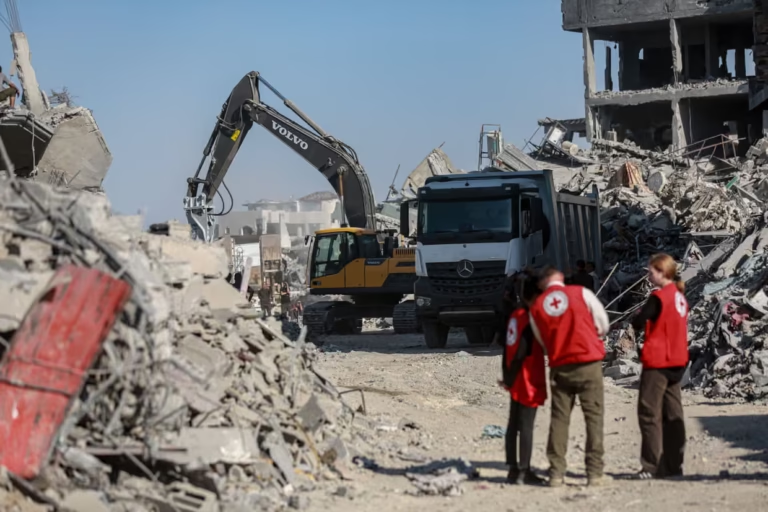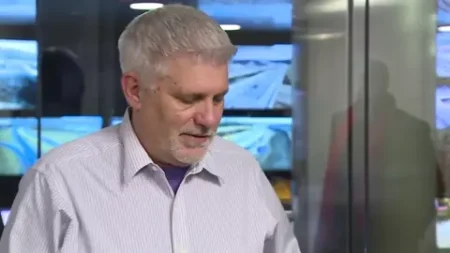Hamas has delivered the remains of an Israeli hostage in Gaza with the International Committee of the Red Cross (ICRC) acting as a neutral intermediary. The return comes under the US-brokered ceasefire, which requires Hamas to return all Israeli hostages in exchange for the transfer of Palestinian bodies to Israel.
Under the ceasefire, effective from 10 October, Israel agreed to hand over 15 Palestinian bodies for each Israeli returned. Hamas’s military wing, the al-Qassam brigades, announced it would deliver the deceased hostage’s remains on Monday evening, coordinated with the Red Cross and the Israeli Defense Forces.
So far, Hamas has returned 15 hostages’ remains. Some others are believed to be in areas beyond the Israeli-designated “yellow line,” marking the withdrawal zones. If the identity of Monday’s remains is confirmed, 12 hostages are still unaccounted for. Hamas says locating them is difficult due to rubble from Israeli bombardments.
“At the request of the parties, the ICRC accompanied a party to search for the remains past the IDF-designated ‘yellow line’,” said Sarah Davies, an ICRC spokesperson. She clarified that the organization acted as a neutral intermediary and was not involved in negotiations or the physical recovery of bodies.
Hamas has faced challenges in retrieving all the remains, as some units holding hostages were reportedly killed during Israeli strikes. Israeli authorities, however, insist Hamas knows the locations and could recover more remains with effort.
Earlier, Donald Trump issued a 48-hour ultimatum demanding that Hamas return the bodies of deceased hostages, including two Americans. As the deadline approached, Hamas worked alongside Egyptian teams authorized by Israel to search areas beyond the withdrawal line. Excavators and trucks were used to locate remains under the supervision of the Israeli military.
Footage showed members of Hamas’s “Shadow Unit” accompanying Red Cross vehicles in al-Mawasi near Rafah, a region outside direct Israeli control. Israeli officials confirmed that Hamas, the ICRC, and Egyptian teams were allowed into these areas under close supervision to identify hostages’ locations.
The search has proven extremely challenging. Gaza is filled with an estimated 60 million tonnes of debris, where at least 10,000 Palestinians are reported missing or buried, according to Gaza’s health ministry.
Hamas has said it does not know the exact location of all hostages’ remains. Despite this, Washington received assurances from Hamas about eventual disarmament, though no timeline was set. Israel considers Hamas’s disarmament crucial to ending the conflict and stabilizing Gaza.
Hamas negotiator Khalil al-Hayya emphasized that the group’s weapons remain tied to what they consider ongoing occupation and aggression. He suggested that weapons would be surrendered to the state if the occupation ends, though it is unclear whether this refers to a new Palestinian governing authority expected to take over Gaza.
An additional step to solidify the truce involves creating a stabilization force in Gaza. Turkey had offered to participate, but Israeli Foreign Minister Gideon Saar ruled out Turkish involvement, citing Ankara’s hostile stance toward Israel over the past several years.
The return of hostages’ remains highlights the delicate and complex implementation of the ceasefire, involving international intermediaries and coordination among multiple parties under challenging conditions.







